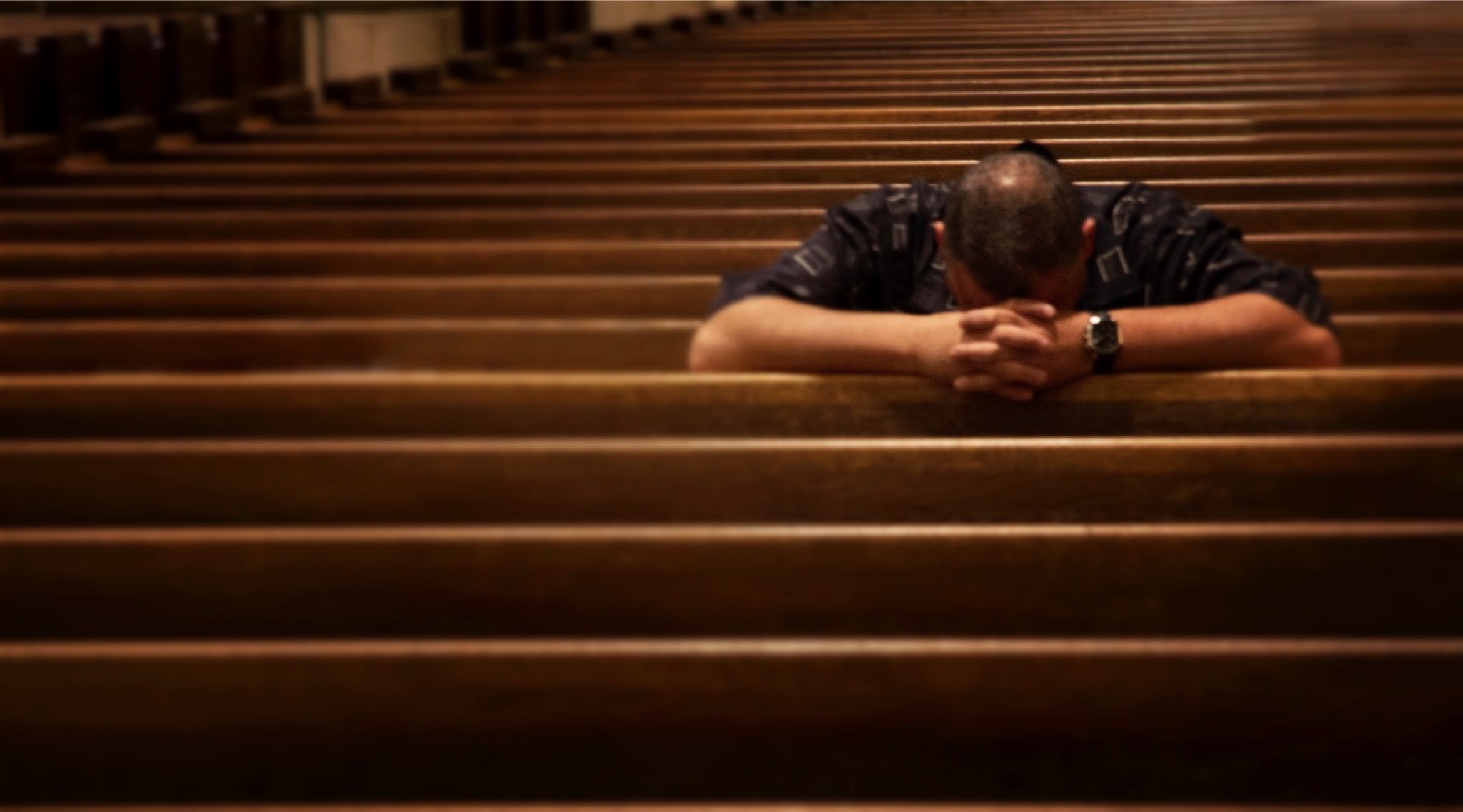
As we continue this five part series on Human Sexuality and Freedom, we now examine some of the moral questions on what is right and what is wrong. Please note, this is for mature readers…
ANSWERS TO INTIMATE QUESTIONS
SOMEONE once said, “The truth will set you free—but first it will tick you off.”
In our first year of marriage, I began reading about the Church’s teaching on contraception and how this would require periods of abstinence. So I thought that, perhaps, there were other “expressions” of affection that were permissible. However, here it seemed the Church was also saying, “no.” Well, I was kind of angry at all these “prohibitions”, and the thought flashed through my mind, “What do those celibate men in Rome know about sex and marriage anyway!” Yet I also knew that if I began to arbitrarily pick and choose what truths were true or not in my opinion, I would soon become unprincipled in many ways and lose friendship with He who is “the Truth.” As G.K. Chesterton once said, “Moral issues are always terribly complex—for someone without morals.”
And so, I laid down my arms, picked up the Church’s teachings again, and tried to understand what “Mother” was trying to say… (cf. An Intimate Testimony).
Twenty-four years later, as I look back on our marriage, the eight children we’ve had, and the new depths of our love for one another, I realize that the Church was  never saying “no.” She was always saying “Yes!” Yes to God’s gift of sexuality. Yes to holy intimacy in marriage. Yes to the wonder of life. What she was saying “no” to were actions that would distort the divine image in which we were made. She was saying “no” to destructive and selfish behaviors, “no” to going against “the truth” that our bodies tell all on their own.
never saying “no.” She was always saying “Yes!” Yes to God’s gift of sexuality. Yes to holy intimacy in marriage. Yes to the wonder of life. What she was saying “no” to were actions that would distort the divine image in which we were made. She was saying “no” to destructive and selfish behaviors, “no” to going against “the truth” that our bodies tell all on their own.
The Catholic Church’s teachings on human sexuality aren’t arbitrarily drawn up, but flow from the laws of creation, flow ultimately from the law of love. They aren’t proposed to infringe on our liberty, but precisely to lead us to greater freedom—just as the guardrails on a mountain road are there to safely lead you  higher and higher as opposed to inhibiting your progress.
higher and higher as opposed to inhibiting your progress.
…feeble and sinful as he is, man often does the very thing he hates and does not do what he wants. And so he feels himself divided, and the result is a host of discords in social life. Many, it is true, fail to see the dramatic nature of this state of affairs in all its clarity… The Church believes that Christ, who died and was raised for the sake of all, can show man the way and strengthen him through the Spirit… —Second Vatican Council, Gaudium et Spes, n. 10
The “way” that Jesus shows us and that is the basis of freedom in our sexuality, lies in “mutual self-giving”, not taking. And therefore, there are laws as to what defines “giving” and what defines “taking.” Yet, as I said in Part II, we live in a society where it’s okay to tell others not to speed, not to park in a handicapped zone, not to hurt animals, not to cheat on taxes, not to overeat or to eat poorly, not to drink excessively or drink and drive, etc. But somehow, when it comes to our sexuality, we have been told the lie that the only rule is that there are no rules. But if there was ever an area of our lives that impacts us more deeply than most everything else, it is precisely our sexuality. As St. Paul wrote:
Shun immorality. Every other sin which a man commits is outside the body; but the immoral man sins against his own body. Do you not know that your body is a temple of the Holy Spirit within you, which you have from God? You are not your own; you were bought with a price. So glorify God in your body. (I Cor 6:18-19)
So with that, I want to discuss the “no’s” of the Church’s teaching precisely so that you and I can enter more fully into God’s “yes” for us, His “yes” for both body and soul. For the greatest way you can glorify God is to live fully according to the truth of who you are…
INTRINSICALLY DISORDERED ACTS
There is a new resource that was published recently by Pursuit of Truth Ministries, a group of Christians who have lived with same-sex attraction. One of the authors recounts how he felt about the Church’s use of the term “intrinsically disordered” to refer to the homosexual tendency.
The first time I read about this term, it was difficult to take. I felt as though the Church was calling me disordered. I could not have found a more hurtful phrase, and it made me want to pack up and leave, and never come back. —“With Open Hearts”, P. 10
But he goes on to rightly point out that any orientation or act that is contrary to the “natural law” is “intrinsically disordered”, meaning “not according to one’s nature.” Acts are disordered when they do not lead to the fulfillment of the purposes of our bodily faculties as they are structurally created. For example, making yourself vomit because you believe yourself to be too fat even though you are skinny is an intrinsic disorder (anorexia) based on a perception of yourself or your body that is contrary to its true nature. Likewise, adultery between heterosexuals is an intrinsically disordered act since it is contrary to the order of creation as intended by the Creator between spouses.
St. John Paul II taught:
Freedom is not the ability to do anything we want, whenever we want. Rather, freedom is the ability to live responsibly the truth of our
relationship with God and with one another. —POPE JOHN PAUL II, St. Louis, 1999
Just because one can do something does not mean one should. And so here, we must be straightforward: because the anus is a “hole” does not, therefore, mean it should be penetrated by a penis; because an animal has a vagina does not mean that it should be penetrated by a man; likewise, because the mouth is an opening does not, therefore, make it a moral option for completion of the sex act.
Here, then, is a summary of the Church’s moral theology regarding human sexuality that flows from the natural moral law. Keep in mind that these “laws” are ordered to God’s “yes” for our bodies:
• it is a sin to stimulate oneself, called masturbation, whether it ends in orgasm or not. The reason is that stimulation for self-sexual gratification already tends toward an objectively disordered use of one’s body, which is designed for the completion of the sex act with one’s spouse.
For here sexual pleasure is sought outside of “the sexual relationship which is demanded by the moral order and in which the total meaning of mutual self-giving and human procreation in the context of true love is achieved.” —Catechism of the Catholic Church, n. 2352
(Note: any involuntary act that results in an orgasm, such as a nocturnal “wet dream,” is not sinful.)
• it is always wrong for a male orgasm to take place outside of his wife, even if preceded by penetration (and then withdrawn prior to ejaculation). The reason  is that ejaculation is always ordered toward procreation. Any action which procures an orgasm outside of intercourse or purposely interrupts it in the course of sexual interaction in order to avoid pregnancy is an act not open to life, and therefore contrary to its intrinsic function.
is that ejaculation is always ordered toward procreation. Any action which procures an orgasm outside of intercourse or purposely interrupts it in the course of sexual interaction in order to avoid pregnancy is an act not open to life, and therefore contrary to its intrinsic function.
• stimulation of another’s genitalia (“foreplay”) is only permissible when it results in the completion of intercourse between a husband and wife. Mutual masturbation between spouses is unlawful because the act is not open to life and is contrary to the intended design of our body’s sexuality if it does not end in intercourse. When it comes to oral means of stimulation, as said above, kissing, etc. cannot lead to the man’s seed being spilled outside of intercourse, but is not illicit if it is ordered to the “mutual self-giving” that is the basis of the unitive and procreative act, for the body is in its essence “good.”
Let him kiss me with kisses of his mouth, for your love is better than wine… (Song of Songs 1:2)
Here, the husband has a particular duty to ensure that his “touch” is giving in love, and not taking in lust. In this way, their mutual pleasure is raised to the dignity which God intended it to have, since He designed pleasure as an intrinsic part of our sexuality. It is not illicit, in this regard, for a woman to have an orgasm before or after the penetration of the man, so long as the completion of the conjugal act does in fact occur, as God intended it. The goal is not orgasm alone, but a complete giving of self that leads to a deeper union in sacramental love. In his work Moral Theology by Fr. Heribet Jone, which bears the Imprimatur and Nihil Obstat, he writes:
Wives who do not obtain complete satisfaction may procure it by touches immediately before or after coition since the husband may withdraw immediately after ejaculation. (p. 536)
He continues,
Mutual acts that are sexually stimulating are lawful when done with a just cause (eg. as a sign of affection) if there is no danger of pollution (even though this should sometimes accidentally follow) or even if there is such danger but there is also a reason justifying the action…. (p. 537)
In this regard, it is worth repeating St. John Paul II’s insight that ideally…
…the climax of sexual arousal takes place both in a man and in a woman, and that it occurs inasmuch as possible in both spouses at the same time. —POPE JOHN PAUL II, Love and Responsibility, Kindle version by Pauline Books & Media, Loc 4435f
This orders the conjugal act toward a mutual “climax” of giving and receiving.
• Sodomy, once considered illegal in most countries, is not only gaining ground as an acceptable form of sexual expression, but is being casually mentioned in some sex education classes with children, and even encouraged as a form of recreation for heterosexual couples. However, the Catechism states that such acts are “sins gravely contrary to chastity” [1]cf. CCC, n. 2357 and contrary to the function nature prescribes to the rectum, which is a receptacle of waste, not life.
•  Following from the same stream of logic, condoms, diaphragms, birth control pills, etc. are all gravely immoral because they are contrary to that “mutual self-giving and human procreation” established in the moral order. Abstaining from sexual intercourse during a woman’s period of fertility (while still remaining open to the possibility of life) is not contrary to the natural law, but is an acceptable use of human reason and intelligence in the regulation of births. [2]cf. Humanae Vitae, n. 16
Following from the same stream of logic, condoms, diaphragms, birth control pills, etc. are all gravely immoral because they are contrary to that “mutual self-giving and human procreation” established in the moral order. Abstaining from sexual intercourse during a woman’s period of fertility (while still remaining open to the possibility of life) is not contrary to the natural law, but is an acceptable use of human reason and intelligence in the regulation of births. [2]cf. Humanae Vitae, n. 16
• A child is not something owed to one but is a gift. Any act such as homologous artificial insemination and fertilization is morally unacceptable since it dissociates the sexual act from the procreative act. That act which brings the child into existence is no longer an act by which two persons give themselves to one another, but one that “entrusts the life and identity of the embryo into the power of doctors and biologists and establishes the domination of technology over the origin and destiny of the human person.” [3]cf. CCC, 2376-2377 There is also the fact that several embryos are often destroyed in artificial methods, which itself is a grave sin.
• Pornography is always gravely immoral because it is the objectification of another person’s body for sexual gratification. [4]cf. The Hunted Likewise, using pornography during sexual intercourse between spouses in order to “help” their love-life is also gravely sinful since Our Lord himself equates lustful eyes toward another to adultery. [5]cf. Matt 5:28
• Sexual relations outside of marriage, including “living together” before the wedding, is also a grave sin because it is “contrary to the dignity of persons and of human sexuality” (CCC, n. 2353). That is, God created man and woman for one  another in a mutual, life-long covenant that reflects the bond of love between the Holy Trinity. [6]cf. Gen 1:27; 2:24 The marriage covenant is the vow that honors the dignity of the other, and is the only rightful context for sexual union since the consent to sexual union is the fulfillment and consummation of that covenant.
another in a mutual, life-long covenant that reflects the bond of love between the Holy Trinity. [6]cf. Gen 1:27; 2:24 The marriage covenant is the vow that honors the dignity of the other, and is the only rightful context for sexual union since the consent to sexual union is the fulfillment and consummation of that covenant.
In conclusion, none of the above takes into account the dangerous health consequences that are introduced by going outside of the safe bounds of moral sexual expression, such as in anal or oral sex, bestiality, and contraception (e.g. artificial contraceptives have been found to be carcinogenic and linked to cancer; likewise, abortion, which is used commonly as a birth control method today, has been found in twelve studies to be linked to breast cancer. [7]cf. LifeSiteNews.com) As is always the case, actions sown outside of God’s designs often reap undesired consequences.
ON ALTERNATIVE FORMS OF MARRIAGE
Given the above laws that should govern our sexual conduct, a word on alternative forms of marriage find a context here. And I say “alternative” as opposed to  only “gay marriage,” because once you unhinge marriage from the natural moral law, anything goes according to the ideology of the courts, the whims of the majority, or the power of the lobby.
only “gay marriage,” because once you unhinge marriage from the natural moral law, anything goes according to the ideology of the courts, the whims of the majority, or the power of the lobby.
Neither two men nor two women can form a mutually complementary sexual relationship by default: they lack the necessary biology in one of the partners. But it is precisely this complementary between male and female that forms the basis of what is called “marriage” because it goes beyond affections to a unique biological reality. As Pope Francis recently said,
The complementarity of man and woman, summit of divine creation, is being questioned by the so-called gender ideology, in the name of a more free and just society. The differences between man and woman are not for opposition or subordination, but for communion and generation,
always in the “image and likeness” of God. Without mutual self-giving, neither one can understand the other in depth. The Sacrament of Marriage is a sign of the love of God for humanity and of Christ’s giving himself for his Bride, the Church. —POPE FRANCIS, address to Puerto Rican Bishops, Vatican City, June 08, 2015
Now, the claims today for the basis for “gay marriage” range from “companionship” to “love” to “fulfillment” to “tax benefits” and so forth. But all those answers could likewise be claimed by a polygamist wanting the State to sanction his marriage to four women. Or a woman wanting to marry her sister. Or a man wanting to marry a boy. Indeed, the courts are already having to deal with these cases since it has opened a Pandora’s box by ignoring the natural law and redefining marriage. Researcher Dr. Ryan Anderson illustrates this perfectly:
But there is another point to be made here. The question of “marriage” and the question of “sexual expression” are actually two separate entities. That is, even if the law states that two homosexuals can “marry,” this does not, therefore, sanction sexual acts that are objectively disordered. There is still no moral way to effectively consummate the “marriage.” But the very same principle applies to a heterosexual couple: just because they are married does not mean that objectively immoral acts are therefore now permissible.
I have dialogued with both men and women who had been living in same-sex relationships but wanted to conform their lives to the teachings of the Church. They embraced a life of chastity as they understood that their mutual love and affection for their partner could not become a doorway to vice. One man, after coming into the Catholic  Church, asked his partner, after thirty-three years together, to allow him to live a celibate life. He wrote me recently saying,
Church, asked his partner, after thirty-three years together, to allow him to live a celibate life. He wrote me recently saying,
I have never regretted and still am in awe of this gift. I can’t explain, other than the profound deepest love and longing for the final union that inspires me.
Here is a man who is one of those beautiful and courageous “signs of contradiction” I spoke of in Part III. His voice and experience is similar to the voices in the documentary The Third Way and the new resource “With Open Hearts” in that they are individuals who did not find oppression, but freedom in the moral teachings of the Catholic Church. They discovered the liberating joy of God’s commandments: [8]cf. John 15:10-11
I find joy in the way of your testimonies more than in all riches. I will ponder your precepts and consider your paths. In your statutes I take delight… (Psalm 119:14-16)
FROM GUILT TO FREEDOM
Our sexuality is such a sensitive and delicate aspect of who we are because it touches on the very “image” of God in whom we are created. As such, this article might be an “examination of conscience” for several readers that has left you troubled over your past or present infidelities. So I want to end Part IV by reminding the reader once again of the words of Jesus:
For God sent the Son into the world, not to condemn the world, but that the world might be saved through him. (John 3:17)
If you have been living outside of God’s laws, it is precisely for you that Jesus was sent to reconcile you to God’s order. In our world today, we have invented all kinds of drugs, therapies, self-help programs, and television shows to help deal with depression and anxiety. But in truth, a lot of our angst is the  result of knowing deep down that we are living contrary to a higher law, contrary to the order of creation. That restlessness can also be identified by another word—are you ready for it?—guilt. And there is only one way to truly remove this guilt without having to book a therapist: reconcile with God and His Word.
result of knowing deep down that we are living contrary to a higher law, contrary to the order of creation. That restlessness can also be identified by another word—are you ready for it?—guilt. And there is only one way to truly remove this guilt without having to book a therapist: reconcile with God and His Word.
My soul is depressed; lift me up according to your word. (Psalm 119:28)
It doesn’t matter how many times you’ve sinned or how grave your sins. The Lord wants to restore you to the image in which He created you and thus restore you to the peace and “harmony” that He intended for mankind from the beginning of creation. I am often encouraged by these words confided by Our Lord to St. Faustina:
O soul steeped in darkness, do not despair. All is not yet lost. Come and confide in your God, who is love and mercy… Let no soul fear to draw near to Me, even though its sins be as scarlet… I cannot punish even the greatest sinner if he makes an appeal to My compassion, but on the contrary, I justify him in My unfathomable and inscrutable mercy. —Jesus to St. Faustina, Divine Mercy in My Soul, Diary, n. 1486, 699, 1146
The place of restoration in Christ is in the Sacrament of Confession, particularly for those grave or “mortal” sins against ourselves or others. [9]cf. To Those in Mortal Sin As I’ve said above, God has not placed these moral boundaries in order to induce guilt, generate fear, or suppress our sexual energies. Rather, they are there to produce love, generate life, and channel our sexual desires into the mutual service and self-giving of spouses. They exist to  lead us to freedom. Those who attack the Church today as an oppressive “guilt machine” because of its “rules” are rather hypocritical. Because the same could be said for any institution that has a handbook of bylaws and guidelines to steer the conduct of their employees, students, or members.
lead us to freedom. Those who attack the Church today as an oppressive “guilt machine” because of its “rules” are rather hypocritical. Because the same could be said for any institution that has a handbook of bylaws and guidelines to steer the conduct of their employees, students, or members.
Thanks be to God that, if we have broken through the “guardrails” and gone tumbling down the mountain, He can restore us through His mercy and forgiveness. Guilt is a healthy response insofar as it moves our conscience to correct out behaviour. At the same time, hanging on to guilt is not healthy when the Lord died on the Cross in order to take away that guilt and our sins.
The following are words that Jesus speaks to everyone, whether they are “gay” or “straight.” They are an invitation to discover the glorious freedom that awaits those who put their trust in God’s plan for creation—which includes our sexuality.
Be not afraid of your Savior, O sinful soul. I make the first move to come to you, for I know that by
yourself you are unable to lift yourself to me. Child, do not run away from your Father; be willing to talk openly with your God of mercy who wants to speak words of pardon and lavish his graces on you. How dear your soul is to Me! I have inscribed your name upon My hand; you are engraved as a deep wound in My Heart. —Jesus to St. Faustina, Divine Mercy in My Soul, Diary, n. 1485
In the final part of this series, we’ll discuss the challenges we face as Catholics today and what our response should be…
FURTHER READING
Support Mark’s full-time ministry:
To journey with Mark in The Now Word,
click on the banner below to subscribe.
Your email will not be shared with anyone.
Now on Telegram. Click:
Follow Mark and the daily “signs of the times” on MeWe:
Listen on the following:
Footnotes
| ↑1 | cf. CCC, n. 2357 |
|---|---|
| ↑2 | cf. Humanae Vitae, n. 16 |
| ↑3 | cf. CCC, 2376-2377 |
| ↑4 | cf. The Hunted |
| ↑5 | cf. Matt 5:28 |
| ↑6 | cf. Gen 1:27; 2:24 |
| ↑7 | cf. LifeSiteNews.com |
| ↑8 | cf. John 15:10-11 |
| ↑9 | cf. To Those in Mortal Sin |





